1.
Introduction
The theory of fixed points is one of the interesting areas of research in mathematics. In 1890, Picard [1] established the concept of fixed point theory by using the successive approximations method and proved the existence of solutions of differential equations. In the field of mathematics, many researchers have made their contributions to fixed point theory by applying different types of contraction mappings and spaces. In 1922, Banach [2] proved a "Banach Contraction Principle" which is stated as follows: "A single-valued contractive type mapping on a complete metric space has a unique fixed point". Since then, many mathematicians have generalized in many directions and proved distinct contractive-type fixed point theorems in the framework of metric spaces for single- and multi-valued operations. Some of their findings in different types of metric spaces can be found in [3,4,5,6,7,8,9,10].
In 1972, Grossman and Katz [11] established an advanced type of calculus called multiplicative calculus by replacing the roles of difference and sum with the roles of division and multiplication, separately. By applying the concept of multiplicative calculus, Bashirov et al. [12] proved the basic theorem of multiplicative calculus and defined the notion of multiplicative metric space (MM-space). The characterization of completeness in MM-space was discussed by Sarwar and Rom [13]. He et al. [14] established some common fixed point theorems for weak commutative mapping on MM-space. In [15], Jiang and Gu proved some common coupled FP results in MM-spaces with applications. For more detail, we shall refer the readers to [16,17,19,20,21,22,23,24,25,26]and the references are therein.
In the present paper, we prove some new fixed point results for linear-mapping in multiplicative metric spaces under the generalized contraction conditions. Our main results consist of the maximum and minimum types regarding contraction conditions. We also present some demonstrative examples and an application in support of our generalized results to validate our work.
2.
Preliminaries
Definition 2.1. [12] Let W≠∅ seT, Then, a mapping d⋆:W×W→R+ is called a multiplicative metric if it satisfies the following conditions:
(m1) d⋆(˜p,˜δ)≥1 and d⋆(˜p,˜δ)=1⇔˜p=˜δ, for all ˜p,˜δ∈W.
(m2) d⋆(˜p,˜δ)=d⋆(˜δ,˜p) for all ˜p,˜δ∈W.
(m3) d⋆(˜p,˜δ)≤d⋆(˜p,˜δ∘).d⋆(˜δ∘,˜δ) for all ˜p,˜δ,˜δ∘∈W.
A pair (W,d⋆) is said to be an MM-space.
Example 2.2. [12] Consider W=(R+)ξ containing all ξ-tuples of positive real numbers. Let d⋆:(R+)ξ×(R+)ξ→R be defined as follows:
where ˜p=(r1,r2,...,rξ), ˜δ=(s1,s2,...,sξ)∈(R+)ξ, and |⋅|:R+→[1,+∞) is defined as
Then, it is conclusive that all the given conditions of an MM-space are satisfied, and hence ((R+)ξ,d⋆) is an MM-space.
Definition 2.3. [15,24] Let (W,d⋆) be an MM-space and {pξ} be a sequence in W. Then,
(ⅰ) pξ is convergent to p∈W as ξ→+∞ iff d⋆(pξ,p)→1 as ξ→+∞.
(ⅱ) {pξ} is called a multiplicative Cauchy sequence if it holds that for all ε>1, there exists a natural number ξ0∈N such that d⋆(pξ,pς)<ε for all ξ,ς>ς0.
(ⅲ) (W,d⋆) is called multiplicative complete if every multiplicative Cauchy sequence in (W,d⋆) is multiplicative convergent in W.
Lemma 2.4. [24] Let (W,d⋆) be an MM-space and {pξ} be a sequence in W. If a sequence {pξ} is multiplicative convergent, then the multiplicative limit is unique.
Theorem 2.5. [24] Let (W,d⋆) be an MM-space and sequence {pξ} in W be multiplicative convergent, Then, it is a multiplicative Cauchy sequence.
3.
Main results
In this section, we define and prove some generalized contraction theorems on MM-spaces.
Definition 3.1. Let (W,d⋆) be an MM-space. A mapping Γ:W→W is said to be a Generalized multiplicative contraction (GM-contraction), if there exists ˜λ1,˜λ2,˜λ3≥0 with (˜λ1+4˜λ2+2˜λ3)<1 and satisfying:
for all ˜p,˜δ∈W.
Theorem 3.2. Suppose (W,d⋆) is a complete MM-space and a function Γ:W→W is a GM-contraction satisfying (3.1). Then, Γ has a unique fixed point in W.
Proof: Fix p0 in W, and a sequence {pξ} in W is defined by pξ+1=Γpξ for ξ≥0. Now, from (3.2),
After simplification, we obtain that
Similarly,
Now, from (3.2) and (3.3), and by induction, we have
Hence, the sequence {pξ} in (W,d⋆) is contractive. Now, ξ<ς, and by using the triangular property of (W,d⋆), we have that
Hence it is show that {pξ} is a Cauchy sequence in (W,d⋆). By the completeness of (W,d⋆), there exists κ∈W, so that limξ→+∞pξ=κ, and therefore
Now, we have to show that Γ(κ)=κ. Then, from (3.1) and (3.5), we have that
Hence, we obtain that
is a contradiction. Hence, we get that d⋆(Γκ,κ)=1 implies that Γκ=κ, which shows that κ is a FP of Γ in (W,d⋆).
Uniqueness: Suppose μ∈W is another FP of the mapping Γ, so that Γμ=μ. Now, we prove that κ=μ. From the view of (3.1), we have
This implies that
is a contradiction. Hence, we get that d⋆(κ,μ)=1 implies that κ=μ. Thus, Γ has a unique fixed point in W.
If we reduce and use separately the second and third term values of the statement of Theorem 3.2, we get the following two corollaries.
Corollary 3.3. Let (W,d⋆) be a complete MM-space and let a function Γ:W→W satisfy,
for all ˜p,˜δ∈W and ˜λ1,˜λ2,˜λ3≥0 with (˜λ1+2˜λ2+˜λ3)<1. Then, Γ has a unique FP in W.
Corollary 3.4. Let (W,d⋆) be a complete MM-space and let a function Γ:W→W satisfy,
for all ˜p,˜δ∈W and ˜λ1,˜λ2,˜λ3≥0 with (˜λ1+2˜λ2+2˜λ3)<1. Then, Γ has a unique FP in W.
Now we present a supportive example for our first main result.
Example 3.5. Assume that W=[0,+∞[, and d⋆:W→R is a complete MM-space which is defined as d⋆(˜p,˜δ)=2|˜p−˜δ| for all ˜p,˜δ∈W. Now, we define a function Γ:W→W by Γ(˜p)=˜p10 for ˜p∈W. Now, from (3.2), we have
Hence, all properties of Theorem 3.2 are satisfied for particular ˜λ1=˜λ2=120 and ˜λ3=15, and Γ has a unique fixed point, that is, Γ(0)=0.
Now, we present our second main result for minimum condition,
Theorem 3.6. Let (W,d⋆) be a complete MM-space and let a function Γ:W→W satisfy;
for all ˜p,˜δ∈W and ˜λ1,˜λ2,˜λ3≥0 with (˜λ1+4˜λ2)<1. Then, Γ has a unique fixed point in W.
Proof. Fix p0 in W, and a sequence {pξ} in W is defined pξ+1=Γpξfor ξ≥0. Now, from (3.6),
After simplification, we obtain that
Similarly,
Now, from (3.7) and (3.8) and by induction, we have
Hence, the sequence {pξ} in (W,d⋆) is contractive. Now, ξ<ς, and by using the triangular property of (W,d⋆), we have that
Hence it is shown that {pξ} is a Cauchy sequence in (W,d⋆). By completeness of (W,d⋆), there exists κ∈W, so that limξ→+∞pξ=κ, and therefore
Now, we have to show Γ(κ)=κ. Then, from (3.1) and (3.10), we have that
Hence, we obtain that
is a contradiction. Hence, we get that d⋆(Γκ,κ)=1 implies that Γκ=κ, which shows that κ is a FP of Γ in (W,d⋆).
Uniqueness: Suppose μ is another fixed point of the mapping Γ in (W,d⋆), so that Γμ=μ. Now, we show that κ=μ. From the view of (3.6),
Hence,
is a contradiction. Hence, we get that d⋆(κ,μ)=1 implies that κ=μ. Thus, Γ has a unique FP in W.
If we reduce and use separately the second and third term values of the statement of Theorem 3.6, we get the following two corollaries.
Corollary 3.7. Let (W,d⋆) be a complete MM-space and let a function Γ:W→W satisfy,
for all ˜p,˜δ∈W and ˜λ1,˜λ2,˜λ3≥0 with (˜λ1+2˜λ2+˜λ3)<1. Then, Γ has a unique fixed point in W.
Corollary 3.8. Let (W,d⋆) be a complete MM-space and let a function Γ:W→W satisfy,
for all ˜p,˜δ∈W and ˜λ1,˜λ2,˜λ3≥0 with (˜λ1+2˜λ2)<1. Then, a function Γ has a unique fixed point.
Example 3.9. From Example 3.5, a function Γ is a multiplicative contraction and holds all the conditions of Theorem 3.6 with particular constants ˜λ1=120, ˜λ2=15 and ˜λ3=0. A function Γ has a unique fixed point, that is, 0.
4.
Application
For the validity of our main results, we present an application of a nonlinear integral equation (NIE) for the existence of a unique solution. Let W=B([c,d],R) be the Banach space of all continuous mappings on [c,d] with supremum norm
and the metric d⋆:W×W→R is defined as:
The NIE is defined as:
with ˜n∈[c,d]⊂R and E:[c,d]×[c,d]×R→R.
Theorem 4.1. Assume that the NIE is defined as in (4.2), and there exists ˜λ∈(0,1) so that
where
Then, the NIE (4.2) has a unique solution in W.
Proof. Define a function Γ:W→W by
Now, we apply Theorem 3.1 to the integral operator Γ to validate our work. We may have the following three main cases:
(1) If ‖˜p−˜δ‖ is the minimum term in (4.4), then D(Γ,˜p,˜δ)=‖˜p−˜δ‖. Now from (4.1) and (4.3), we have that
for all ˜p,˜δ∈W. Hence, the operator Γ satisfies all the conditions of Theorem 3.1 with ˜λ=˜λ1 and ˜λ2=˜λ3=0. Thus, Γ has a unique FP in W, which is a unique solution of NIE (4.2).
(2) If (‖˜p−Γ˜p‖⋅‖˜δ−Γ˜δ‖⋅‖˜δ−Γ˜p‖⋅‖˜p−Γ˜δ‖) is the minimum term in (4.4), then
Now, from (4.1) and (4.3), we have that
for all ˜p,˜δ∈W. Hence, the operator Γ satisfy all the conditions of Theorem 3.1 with ˜λ=˜λ2 and ˜λ1=˜λ3=0. Thus, Γ has a unique FP in W, which is a unique solution of NIE (4.2).
(3) If (max{‖˜p−Γ˜p‖,‖˜δ−Γ˜δ‖,‖˜δ−Γ˜p‖,‖˜p−Γ˜δ‖}) is the minimum term in (4.4), then
Now, we may have the following four subcases:
(ⅰ) If ‖˜p−Γ˜p‖ is the maximum term in {‖˜p−Γ˜p‖,‖˜δ−Γ˜δ‖,‖˜δ−Γ˜p‖,‖˜p−Γ˜δ‖}, then D(Γ,˜p,˜δ)=‖˜p−Γ˜p‖. Now, from (4.1) and (4.3), we have that
(ⅱ) If ‖˜δ−Γ˜δ‖ is the maximum term in {‖˜p−Γ˜p‖,‖˜δ−Γ˜δ‖,‖˜δ−Γ˜p‖,‖˜p−Γ˜δ‖}, then D(Γ,˜p,˜δ)=‖˜δ−Γ˜δ‖. Now, from (4.1) and (4.3), we have that
(ⅲ) If ‖˜δ−Γ˜p‖ is the maximum term in {‖˜p−Γ˜p‖,‖˜δ−Γ˜δ‖,‖˜δ−Γ˜p‖,‖˜p−Γ˜δ‖}, then D(Γ,˜p,˜δ)=‖˜δ−Γ˜p‖. Now, from (4.1) and (4.3), we have that
(ⅳ) If ‖˜p−Γ˜δ‖ is the maximum term in {‖˜p−Γ˜p‖,‖˜δ−Γ˜δ‖,‖˜δ−Γ˜p‖,‖˜p−Γ˜δ‖}, then D(Γ,˜p,˜δ)=‖˜p−Γ˜δ‖. Now, from (4.1) and (4.3), we have that
Hence, from (ⅰ)–(ⅳ), the operator Γ satisfies all the conditions of Theorem 3.1 with ˜λ=˜λ3 and ˜λ1=˜λ2=0. Thus, Γ has a unique FP in W, which is a unique solution of a NIE (4.2).
5.
Conclusions
In the present paper, we studied and showed some of the latest generalized fixed point theorems by using the maximum and minimum conditions for single-valued contractive type mappings on MM-spaces with illustrative examples. Our results extended and improved many results existing in the literature of fixed point theory on MM-spaces. Further, we presented an application of an NIE to support our work. This new concept will play a vital role in the theory of fixed point. By using this new concept, one can prove some more generalized fixed point, common fixed point and coincidence point results with the application of different types of integral equations.
Acknowledgments
This research received funding from the National Science, Research and Innovation Fund (NSRIF), Thailand.
Conflict of interest
The authors declare that they have no conflicts of interest.












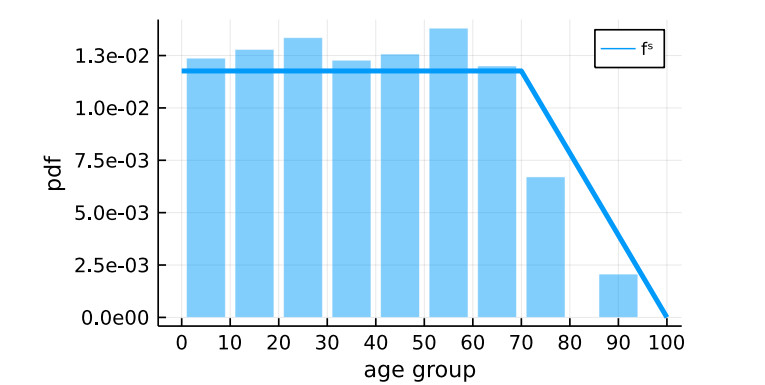

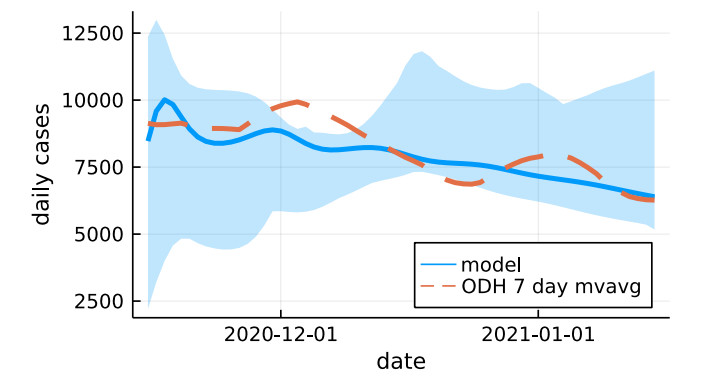
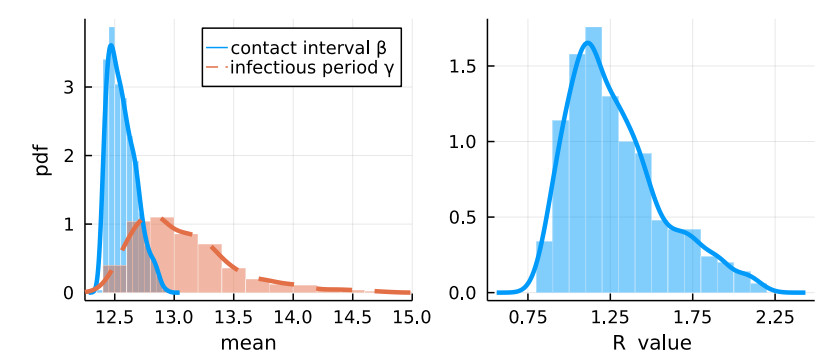
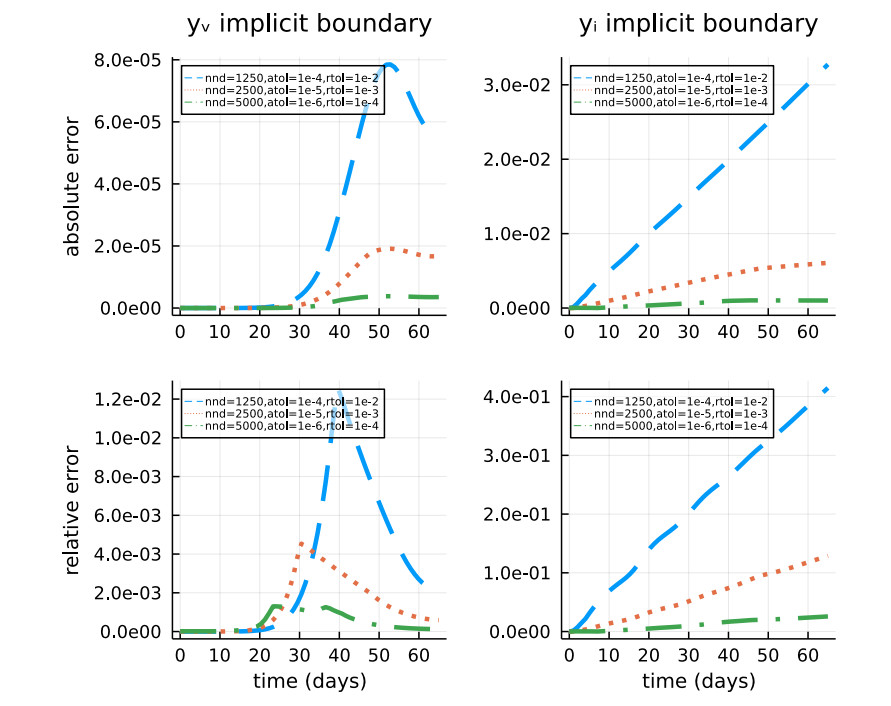
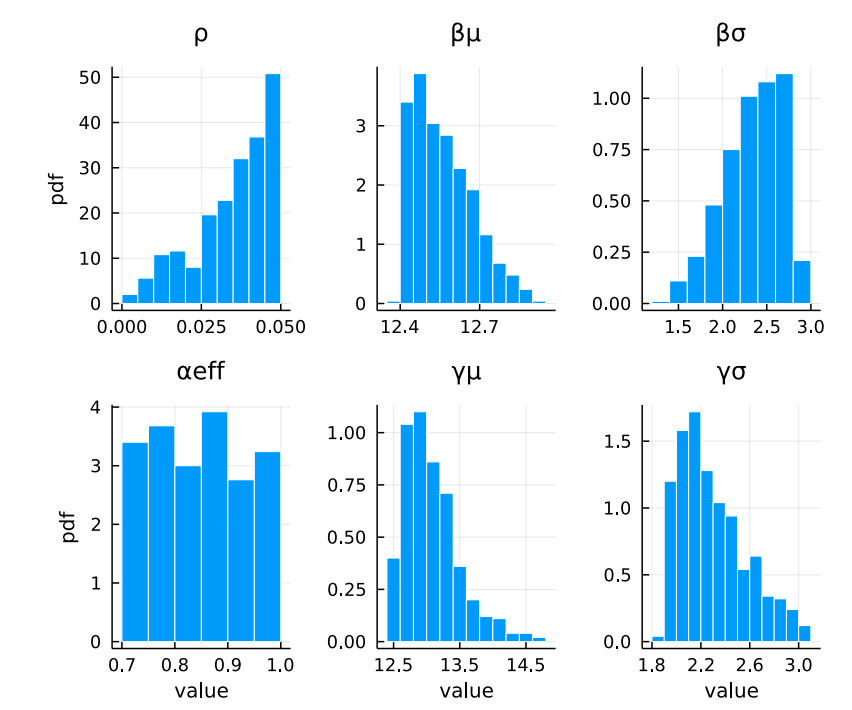


 DownLoad:
DownLoad: